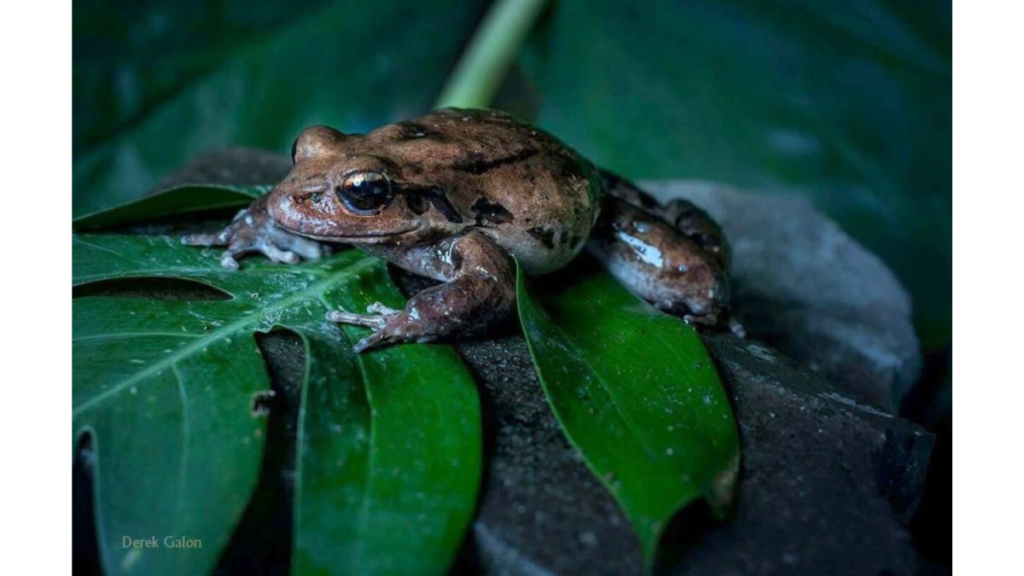The Mountain Chicken is a unique frog species native to the Caribbean islands of Dominica and Montserrat, known for its vibrant green-brown skin and distinctive vocalizations. Known for its terrestrial lifestyle, it thrives in lush rainforests and montane regions, thriving in elevations ranging from sea level to about 1,500 meters. The name “Mountain Chicken” is believed to have originated from the frog’s taste, which some locals compare to chicken, but this association has contributed to its decline due to overhunting.
Conservation efforts are underway to protect the Mountain Chicke’n from threats such as habitat destruction, disease, and climate change. Dominica has implemented strict conservation measures, including protected areas, community involvement, and education programs to raise awareness about the species’ importance. Montserrat has taken innovative steps, such as establishing captive breeding programs and engaging in international partnerships, despite limited resources.
Community engagement is crucial in sustainable conservation, with local communities supporting eco-tourism initiatives and habitat restoration projects. By understanding the Mountain Chicken’s habitat, challenges, and conservation efforts, we can actively contribute to its preservation.
What is the Mountain Chicken?
The term “Mountain Chicken” may evoke images of a peculiar amphibian, but it’s not what you might think. Contrary to its name, the Mountain Chicke’n is not a bird but a large frog species native to the Caribbean. Let’s explore its physical characteristics, habitat, and the reasons behind its curious name.
Discovering the Unique Features
With its vibrant green-brown skin and distinctive vocalizations, the Mountain Chicken is a captivating species. Endemic to the islands of Dominica and Montserrat, this amphibian has adapted to a terrestrial lifestyle, making it different from typical frogs.
Habitat and Lifestyle
Mountain Chickens are primarily found in lush rainforests and montane regions, thriving in elevations ranging from sea level to about 1,500 meters. Their habitat preferences play a crucial role in their daily activities, including breeding, foraging, and shelter-seeking behaviors.
The Curious Case of the Name
You might be wondering, why the peculiar name? The nickname “Mountain Chicken” is believed to have originated from the frog’s taste, which some locals compare to chicken. Unfortunately, this association has contributed to the decline of the species due to overhunting.
Conservation Challenges
Despite its fascinating nature, the Mountain Chicken faces numerous threats, with habitat destruction, disease, and climate change being significant contributors. Conservation efforts have been initiated to protect this unique species from further decline.
The Importance of Conservation
Preserving the Mountain Chicken is not only crucial for the species itself but also for the delicate balance of the ecosystems it inhabits. As a key indicator species, its well-being reflects the health of its environment.
Conservation Initiatives in Action
Several organizations and researchers are actively involved in conservation initiatives to safeguard the Mountain Chicken. From habitat restoration to disease control, these efforts aim to secure a sustainable future for this remarkable amphibian.
Case Studies: Dominica and Montserrat
Let’s take a closer look at how the conservation strategies differ between Dominica and Montserrat, two islands that share the responsibility of protecting the Mountain Chicken.
Dominica: A Haven for the Mountain Chicken
Known for its commitment to preserving biodiversity, Dominica has implemented strict conservation measures. These include protected areas, community involvement, and education programs to raise awareness about the Mountain Chicken’s importance.
Montserrat: Navigating the Challenges
Montserrat faces unique challenges in its conservation journey. Despite limited resources, the island has taken innovative steps, such as establishing captive breeding programs and engaging in international partnerships to boost conservation efforts.
The Role of Community Engagement
Sustainable conservation is a collaborative effort, and local communities play a pivotal role. From supporting eco-tourism initiatives to participating in habitat restoration projects, communities contribute significantly to the well-being of the Mountain Chicken.
Conclusion
As we conclude our exploration into the world of the Mountain Chicken, it’s evident that this unique amphibian requires our attention and support. By understanding its habitat, challenges, and conservation efforts, we can actively contribute to the preservation of this extraordinary species.
Remember, the Mountain Chicken isn’t just a fascinating creature; it’s a symbol of our commitment to biodiversity and environmental conservation. Let’s work together to ensure that the Mountain Chicken continues to thrive in the wild for generations to come.







